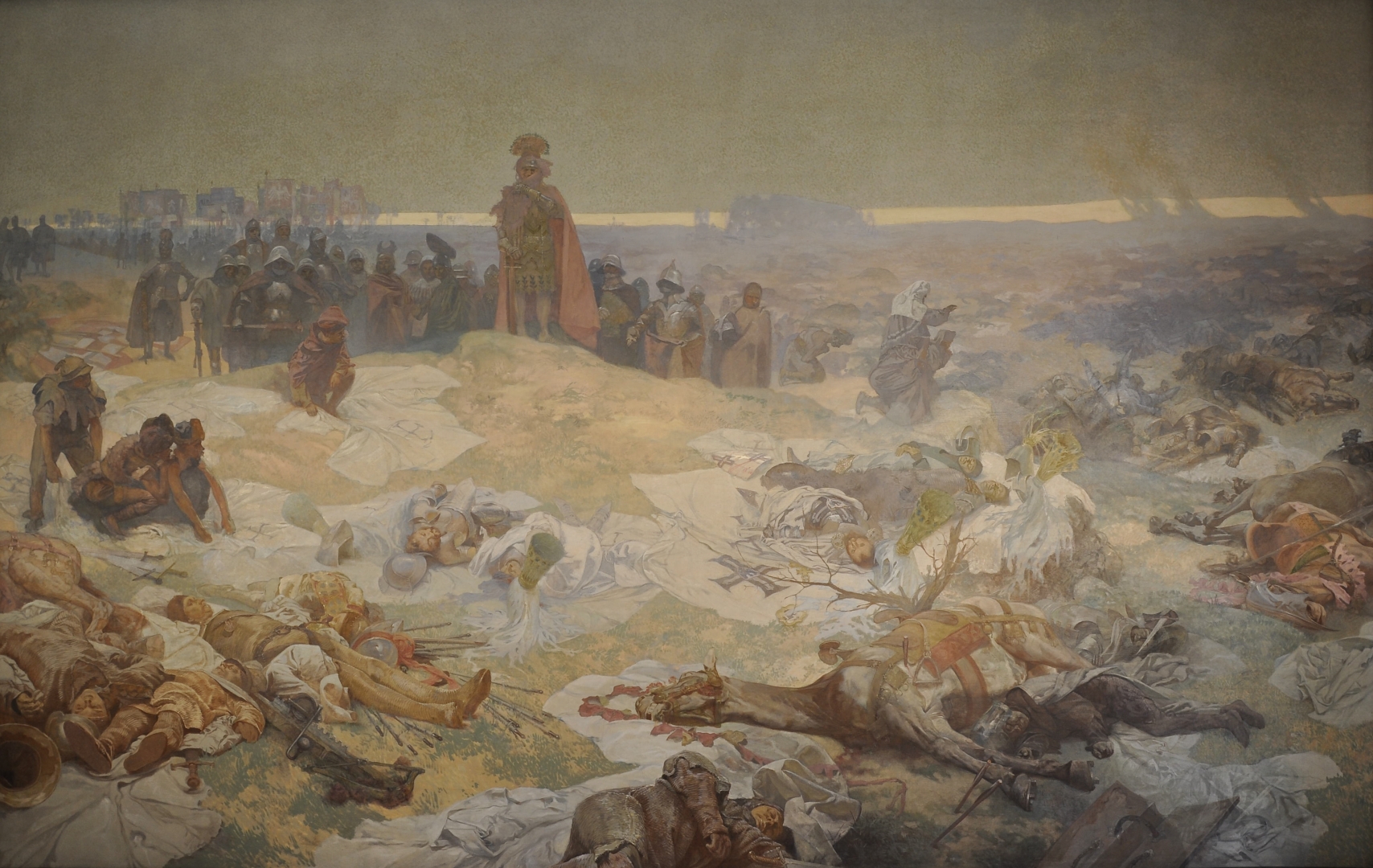AFTER THE BATTLE OF GRUNWALD
In the 12th century, the Order of the Teutonic Knights settled in Prussia to spread Christianity. After many conflicts with eastern neighbors, a decisive war broke out in 1409 against Lithuania, which Poland joined due to familial ties. The decisive battle of Grunwald took place on July 15, 1410, during which the Teutonic Knights were defeated. The battle became legendary and is still considered one of the most significant battles in Polish history.
The painting captures the moment when Polish King Władysław The Second Jagiełło arrives at the victorious battlefield full of casualties at dawn, with the Grand Master of the Teutonic Knights lying there with a cross on his chest. In the background, the Orthodox patriarch is shown blessing the fallen. The white cloaks with black crosses on the battlefield symbolize the end of the order's power and the defense of freedom for Poland and Lithuania. On the left side of the painting kneels a figure in a crusader's cloak, and behind him stands a warrior in armor and a wide helmet. The Moravian knight Jan Sokol of Lamberk is behind him, and next to him stands Jan Zizka of Trocnov with a patch over his right eye, about which there are still speculations about whether he actually participated in the battle.
Mucha’s painting does not celebrate a great Slavic victory but condemns violence. It represents a message calling for peace.

